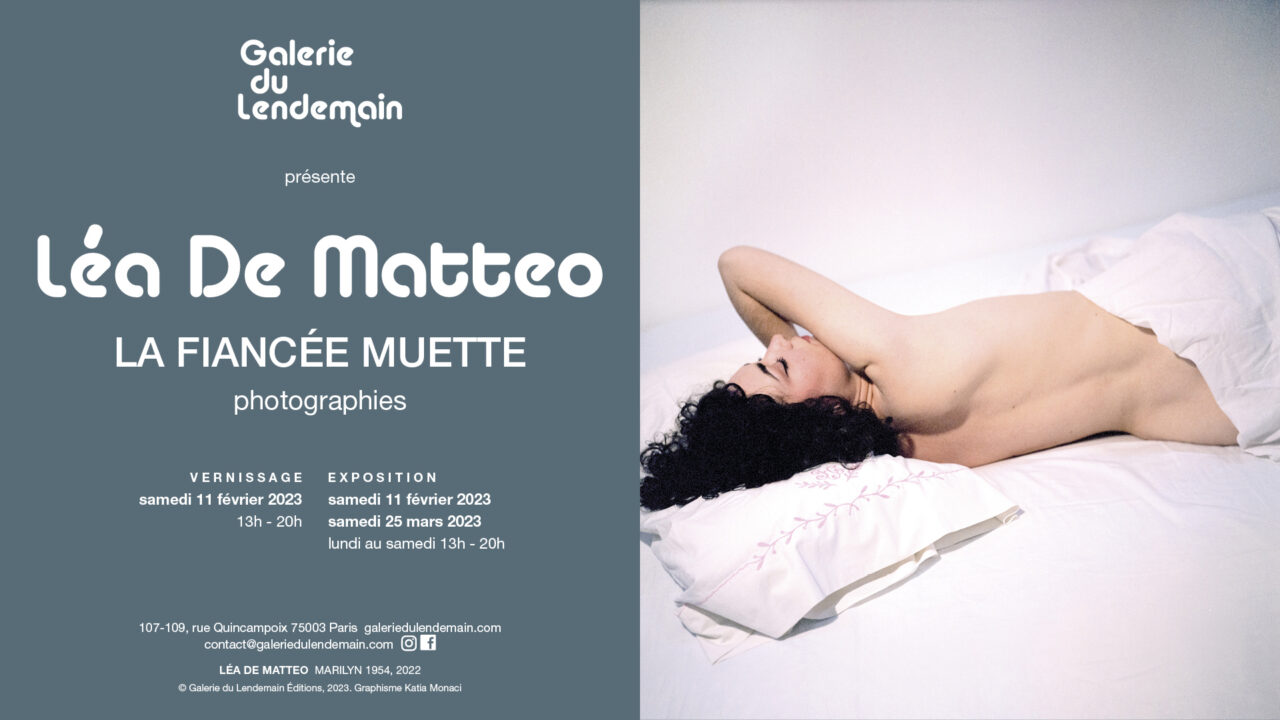LA FIANCÉE MUETTE
LÉA DE MATTEO
photographs
February 11 – March 25, 2023
First, there was the striking image of a woman confined to a wheelchair staring at a television showing the face of the actress she had been. What Happened to Baby Jane, Joan Crawford’s last gamble, turned out to be the final straw for her career. Since then, the image has continued to crystallize around these final vibrations, if she has not simply disappeared from people’ s minds.
For Léa De Matteo, on a night in 2017, this image came to life. Beyond the role, beyond the actress, it was the woman who, fugitively but indelibly, seemed to wake up, in an almost painful burst. A gaze without prejudice was then cast on this fallen icon.
And so it began.
Carefully, resolutely and absolutely, it seemed necessary to lift all the mysteries; to attempt to touch the very essence of the absolute; to pay an almost devout cult to a pagan erected as a Madonna; to unveil her, her attires, her artifices and her make-believe; to navigate against the tide in an era that only wished to hear about a woman objectified and condemned to be the puppet of men in Hollywood -which had already been condemned so many times-, or about a “fan” relation, with its excesses, its idolatry and its short cuts.
A frantic quest then began to make Joan appear in a tangible way, among this dizzying amount of archives, hoping to re-live and comprehend this first precious encounter. Very soon the evidence imposed itself: “to find an image that would be both justice and accuracy” (R. Barthes), worthy of this initial appearance; to welcome this daily and vivid presence, this new intimacy in which Joan took on the roles of sister, friend, lover… It was essential to consent to the surrender, the commitment, the role of a messenger, whose hands were sometimes guided by Joan’s. Temporal distance, death, all these impassable obstacles had to be bypassed, outwitted with ingenuity and honesty.
Creating these contemporary images certainly casts a whole new perspective and frees Joan Crawford from the clichés that have surrounded her. However, the aim is not to restore any kind of “truth” regarding the star, but rather to be part of the frame. By becoming an actress in her own images, Léa De Matteo manages to establish a silent dialogue, in which the creative act is the process as much as the outcome. Far from solving the Joan Crawford enigma, this ever-shifting quest opacifies its heady mystery.

